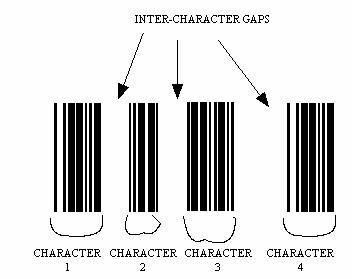Symbologies are the schema how the data is encoded into physicals bars and spaces. Symbology is analogous to the language. The reading and printing equipments must use the same language to communicate with each other, this language is called symbology.
Generally speaking, symbologies can be divided into two major categories: width-modulated and height-modulated. Except these used in postal applications, most symbologies encode the data into the different width of the bars. All the bars have the same height. The contrary holds true for height-modulated symbologies: all bars have the same width, and the data is encoded into different length of the bars.
We call the data to encoded “message” or “code”. When we talk about the physical representation of the message, we refer as “symbol” or “barcode” in this web site.
You can find a list of barcode glossary in the support section.
The symbology configuration refers to the shape of a symbol. There are three major configurations: linear, 2D stacked and 2D matrix. The linear symbology is most widely used, consisting only one row of bars and spaces. The 2D stacked symbol uses multiple rows of bars and spaces. Each row in a 2D stacked symbol has the same height. 2D matrix symbol uses both width and height to encode the data.
The character set defines what kind of data the symbology encodes. Generally there are three types of character sets: numeric, alpha-numeric and full ASCII. Some symbologies can encode arbitrary binary data. Not all alpha-numeric symbologies share the same character set. Most alpha-numeric symbologies can only encode several characters in addition to letters and numbers.
In a discrete symbology, each character ends with a bar and an inter-character gap separates two adjacent characters. Each character is treated separately, no end characters are required for scanning.
In a continuous symbology, there is no inter-character gap and each character terminates at the starting bar of the next character. Hence, a stop character is usually needed. Continuous symbologies usually encode more information than the discrete symbologies.
Some symbologies can encode only certain length of data. For example, UPC only accepts 11 digits and Code39 encodes any length of data.
X dimension describes the nominal width of the narrowest elements (both bars and spaces). For 2D matrix symbologies, X refers to the nominal dimension of the smallest data cell.
The X dimension largely decides the barcode density (how many characters can be encoded in one inch). The resolution of a barcode readers is also measured by the X-dimension that the reader can recognize. A high resolution barcode scanner can recognize a barcode with X dimension at 5 mils.
The linear barcode symbols in an open system usually have a X dimension equal to 10 mils. Two dimensional barcodes usually have a higher X dimension at 20 mils.
Most linear symbologies employs two widths, one for the wide element and one for narrow element. The ratio between the wide element and the narrow element is called N. N typically have a value ranging from 2.0 to 3.0. The large the N is, the allowable printing tolerance increases. N also slightly impact the density of a symbol.
If a single printing defect will not cause a character to be recognized as another one, the symbology is regarded as self-checking. A non-self-checking symbology usually has a check character to make sure that the error is detected.
Start/Stop character is placed to indicate where the barcode symbol starts and ends. It also indicates the scanning direction in some symbologies.





